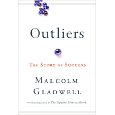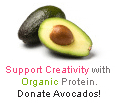Archive for Wisdom
Swimming Through Life
Posted on 02.03.09 | 21 Comments

Photo by: Colleen Yancy. See her flickr stream.I started training for swimming a month ago. For a sprint triathlon, one will have to swim 800 meters without stopping. Alright, that’s my goal. I’ve calculated the length of the pool I use: 25 meters. Okay, 32 laps it is!
On my first day I started with great optimism. “Okay Tina, you can do this! 10 laps without stopping! Go!” By the end of lap 2, I was collapsed over the edge of the pool lane, huffing and puffing to catch my breath. My performance was pathetic and it brought with it the clarity I needed to practice harder. I continued to swim laps every other day, stopping only to catch my breath when needed, until I’d finished a cumulative of 32 laps.
Two weeks later, I overheard an older lady talking about her experience with a sprint triathlon, and I went over to ask a few questions. She said for the swimming leg, I’ll need to prepare to be able to do 40 laps, since it’ll be in a lake and the measurements are not very exact. And also that it was important that I train myself to be able to swim all 40 laps non-stop, or risk drowning.
Forty LAPS??? Holy Crap!
I recall hearing a small voice in my head whispering, “I‘ll never be able to do that”, and then a few pulses later, I heard Tony Robbins’ voice yelling, “If you can’t, then you must!”
Well, all I can say is that there’s nothing like the threat of death by drowning that motivates one to get creative. With that in mind, that very same day I was able to swim the 40 laps without stopping.
Four to Forty Laps in One Day
For one thing, I noticed that I had been experiencing breathing issues when I did the freestyle stroke, which made me super tired and in need of catching my breath at the end of every two laps. So, I started to do back strokes – something I am more comfortable with. My goal wasn’t to look like a professional freestyle swimmer, my goal was to stay afloat and swim the length of 40 laps continuously, so that in an emergency situation, I wouldn’t drown.
Now I do 40 laps each time I hit the pool. Here’s what I’ve observed:
I start with enough confidence and energy to complete all 40 laps. The first 2 laps are easy. But then I start to feel tired. The next 10 or so laps are the hardest. I start to witness my mind looking for excuses to stop. I feel it finding and pointing out the discomfort in my body so that it can maybe convince me that I’m too tired to continue.
Once I get myself to complete 10 laps, things gets significantly easier, and my body is just riding out the repetitive movements. Laps 20 to 30, and from 30 to 40 are a breeze. When I actually hit lap 40, I feel that I can easily do 10 more laps.
Life Patterns
Upon further thought, I have noticed that this pattern of easy-difficult-easy can be seen in many other aspects of life: starting a business, starting a blog, learning a new skill, long distance running, etc.
Let’s take blogging as an example. When a blogger first starts out, they are enthusiastic and hopeful for the future. Pretty easy so far. But all bloggers will go through a period near the start of their blogging career where they experience friction. They may feel discouraged that it’s tough to attract new readers or to market themselves. Or they may run into technology issues and they feel the urge to quite. But if they just hang on and persist through the discouragement and friction, they’ll reach a certain threshold where blogging and marketing become natural and easy, at which point they will be capable of continuing on indefinitely.
The same is true for starting and running a successful business. It starts with fresh enthusiasm which makes the job appear easy. But soon, we experience some form of hardship or problem where we have to work long and challenging hours. The friction makes it tempting to quit, but more likely than not, if we soldier on, staying innovative and persistent, we will succeed.
Take Away Lesson
What I’ve learned through this observation is that persistence is the key! The ability to hanging on, when others have easily given up separates the failures from the triumphs. In life, it isn’t about finding the most comfortable route, but rather finding destinations you want to arrive at and keeping moving until you get there.
No matter how insurmountable a goal may seem, if you just keep trying, one step at a time, there will be a point at which the steps necessary to get there become an easy and effortless trek.
Anything is possible.
Take Care of Suffering Where We Find It
Posted on 09.15.08 | 5 Comments

Photo by Katsuaki ShodaAs I was reading Quantum Wellness last week, I came across a quote that deeply moved me. It was extracted from Jeanne DuPrau’s The Earth House.
Perhaps it was the context that made me feel extra sensitive to the topic of animal suffering. As I was sitting in my reading chair, I looked over at my dog Tommy, who lay peacefully on the ground beside me, with tenderness and purity sparkling in his eyes; I started to cry.
It wasn’t just animal suffering that had bought me to tears, but the realization that “If I could feel such empathy toward animals, then surely I could feel more compassion towards people.”
This has helped me greatly at dealing with internal conflicts involving other people. Each time I sense a grudge or anger towards someone building up within me, I remind myself of this quote and the realization I had experienced while sitting in my reading chair.
It reminds me to be kinder, to seek understanding and to practice forgiveness. As a result, I’m experiencing less mind-created anxiety. Additionally, more peace and compassion towards other people and situations beyond my control.
Enjoy…
“It isn’t easy to turn around and start walking in the other direction on that road that can lead either toward or away from suffering, but we can practice for it in whatever small ways present themselves. We can transport spiders out of the path of danger, if we are willing to be thought mildly ridiculous; we can give over part of the vegetable garden to the gophers and the deer; we can stop shutting the lamb and the pig and the cow out of our imaginations, which will make us less and less interested in eating their legs and sides and rumps. We aren’t going to achieve complete harmlessness, but we can take some steps in that direction. The point of saving all sentient beings is not to ensure the personal health and happiness of every bug, bird, fish, and animals on the planet. It is simply to foster the attitude that leads away from suffering. We can’t change the world so that no one gets sick, no one is hurt, no one dies. The best we can do is take care of suffering where we find it. We save all beings because in the process of doing so we expand the boundaries of our identity; we push out the fences that limit what we can love.”
















